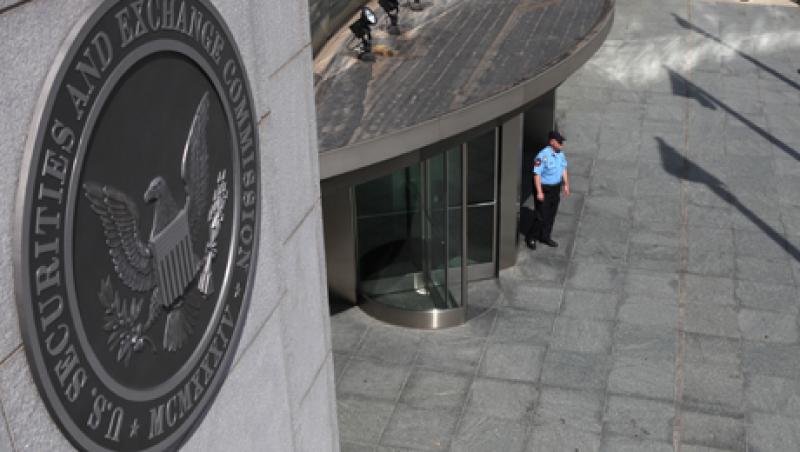Jack Brennan, chairman emeritus of The Vanguard Group, known for its low-cost index funds, recently echoed a common sentiment when he described actively managed ETFs as an oxymoron.
“One of the reasons you index is to take manager risk out of the equation. To put manager risk back into the equation makes no sense to me,” Brennan said at IndexUniverse’s InsideETFs conference in February.
Most people think of ETFs as vehicles built to track indexes passively, and for good reason. To date, that’s what 96 percent of them do. Even when passively managed ETFs follow reweighted or customized indexes, once the index’s rules have been established, the securities selection process is computer-driven and emotionless.
But with big-name fund sponsors like Fidelity and T. Rowe Price lining up at the Securities and Exchange Commission to get into the active space, this may be the year when the actively managed ETF segment finally takes off. Some regulatory hurdles have been cleared, including a moratorium on the use of derivatives, but others remain, such as concerns over front-running.
“The index licensing grab has largely played out,” says Luke Montgomery, an analyst at New York–based Sanford C. Bernstein & Co. As a result, he adds, “many ETF providers view active ETFs as an important new frontier for industry growth.”
Currently, there are 1,445 ETFs in the U.S. Just 58 of them, or 4 percent, are actively managed, and they hold less than 1 percent of the industry’s assets — 0.86 percent, to be precise — or $12.6 billion out of $1.46 trillion, Morningstar says. Of that total, $7 billion is concentrated in two successful fixed-income ETFs from Pacific Investment Management Co.: Total Return ETF (BOND), launched last February, with $4.3 billion in assets, and Enhanced Short Maturity ETF (MINT), introduced in 2009, with $2.7 billion in assets.
So why should the time be right for the launch of more actively managed ETFs?
If actively managed ETFs can outperform their index-based counterparts, they could be of great interest to both individual and institutional investors. In fact, actively managed ETFs might be the next killer app. Compared to mutual funds, ETFs have the advantage of being publicly traded and they have a lower fee structure.
State Street Global Advisors launched its first three actively managed ETFs in April of last year and filed for six more on December 27. According to Jim Ross, the senior managing director at State Street and the head of the asset manager’s ETFs, “We see a strong future for active ETFs” — maybe not immediately, but as a “long-term trend.” Some strategies now in wide use among mutual funds can be ported over to the ETF side only if the ETF is actively managed, for instance, balanced strategies that combine stocks and bonds, he notes. State Street is “still exploring opportunities for passive ETFs,” he says. “We think there’s still room for growth there; we don’t think of it as an either/or proposition.”
AdvisorShares of Bethesda, Maryland, has 18 actively managed ETFs in the market, with the latest one a global income bond fund (MINC) launched on March 20. Most of the actively managed ETFs haven’t had enough time to establish a track record yet. Noah Hamman, AdvisorShares’ CEO, notes that the firm’s first actively managed ETF — the AdvisorShares WCM/BNY Mellon Focused Growth ADR ETF (AADR), launched in July of 2010 — is approaching the three-year mark. “We believe (but can’t be certain) this could be the first 5-star actively managed ETF,” he says, in an email. As of March 25, it had a one-year return of 5.96 percent and a return since inception of 11.08 percent. By way of comparison, since inception, the ETF beat the BONY World Classic ADR TR USD index, which had a lower return of 7.88 percent, the index's one-year return was higher at 7.78 percent.
But the actively managed segment still has to work out a deal with the SEC — if a deal is possible — on daily transparency. That kind of transparency is not a problem with index-based ETFs since everyone knows what they own anyway, but with actively managed ETFs, which are moving in and out of positions, transparency could expose the funds to the risk of front-running. By comparison, mutual funds can operate under the cloak of secrecy since they report their holdings quarterly, 45 days after the end of the quarter. There are different proposals that are being floated with the SEC to address the question of front-running — notably, a filing made just last week by Eaton Vance of Boston for a new type of actively managed, nontransparent ETF called an exchange-traded managed fund.
The issue of possible front-running is “not a huge issue for bond funds but definitely a major issue for equity funds,” says John Hyland, the chief investment officer at United States Commodity Funds of Alameda, California, and the chairman of the National ETF Association, in an email.
There’s no rule in place that says that ETFs have to provide daily transparency, says an industry source, who asked not to be named. But when the SEC has ruled on individual ETFs, it’s been “very consistent” that they must provide “full portfolio transparency, period,” to get the agency’s approval, he says. “The feedback we’ve gotten is that they’re worried about potential conflicts of interest that could favor the market maker at the expense of the ETF’s shareholders,” he says.
Meanwhile, the SEC recently lifted one other regulatory hurdle — a moratorium on the use of derivatives. New applicants for actively managed ETFs can now use futures, options and swaps as portfolio management tools, while ETFs that were previously instructed to refrain from using derivatives can now resume. The one exception is leveraged ETFs, which are still subject to the moratorium on new applications.
The lifting of the moratorium has had no significant impact on the volume of new applications, says Liz Osterman, the SEC’s associate director of exemptive applications, speaking at the Practicing Law Institute’s “SEC Speaks in 2013” conference in Washington, D.C. in February. “We’ve only seen, I think, three new applications since December 6,” she said. Out of about 100 applications for different forms of approval now pending with her office, about one third are for new ETFs, and that “divides up about half and half” between actively and passively managed ETFs, she said. Osterman noted that the Division of Investment Management was only one part of the process since the Division of Trading and Markets also has to sign off, and “they have a lot of work to do for the actively managed ETFs. There’s no generic listing standard for them.”
Although demand has not yet jumped, Chris Thompson of Boston-based Columbia Management believes “the active ETF space is still evolving.” Columbia acquired five active ETFs from Grail Management in 2011 and filed for 17 more last August, says Thompson, who heads up distribution, products and marketing at the fund manager. Given the time it takes to get SEC and exchange approval, “we wanted to start the process early,” he says.
“We want to make sure our investment capabilities are available across a wide range of vehicles. Different clients may prefer accessing our investment capabilities in different ways, and we want to make sure we’re not excluding a group,” he says. “We like to describe it as being vehicle agnostic,” he adds, noting that the active ETF line-up will complement its existing line of actively managed mutual funds and separate accounts.
“Removing one roadblock at the SEC does not mean that the road ahead is set for smooth sailing,” says the National ETF Association’s Hyland. “So yes, it may mean that firms go ahead and file more prospectuses for active funds, but no, it does not mean that we will see a bumper crop of them actually hit the market. Filing a prospectus is the easy part, getting it signed off by all the different regulators/divisions is a hell of a lot harder.”





